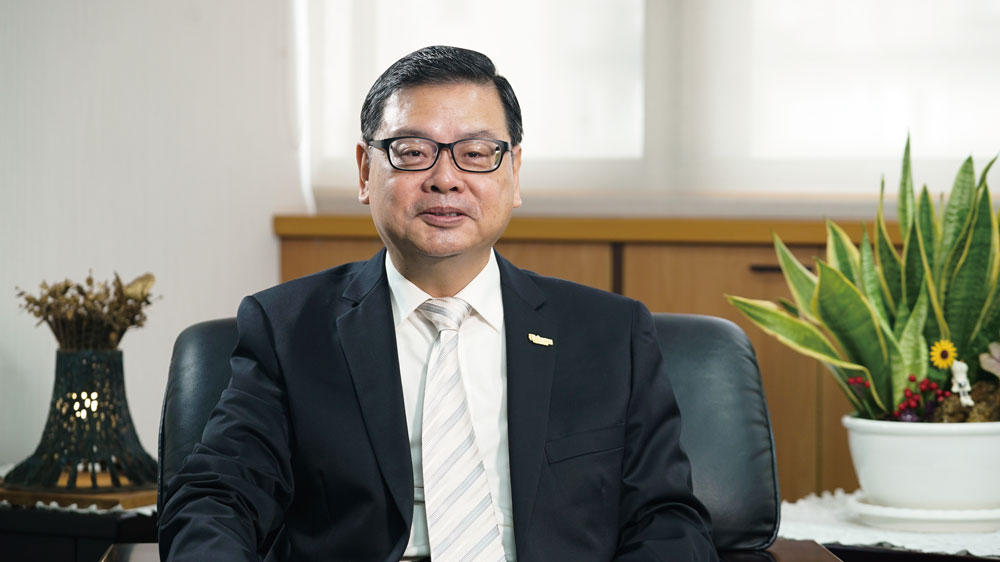Adapt, Change, and Evolve
Seeing opportunity in adversity to create new value in the tourism industry
The outbreak of the global COVID-19 pandemic over a year ago plunged the international tour-ism market into a virtual ice age. Global tourism demand plummeted in 2020 as nations enacted travel restrictions. The number of international tourism trips fell by an estimated one billion-plus globally, pulling down tourism revenue by more than US$930 billion. In the Asia-Pacific region, which was hit first and hardest by the pandemic, the number of international inbound tourists fell by more than 300 million from 2019. The pandemic reduced the number of inbound tourist visits to Taiwan to 1,377,861 in 2020, down by 88.9% from 2019.
Facing the uncertain development of the pandemic, the Tourism Bureau established a COVID-19 response team. It also formulated related response measures and contingency mechanisms early in the outbreak in coordination with Central Epidemic Command Center prevention measures. We are thankful that the tourism industry cooperated with government policies and prevention measures. During the pandemic, the industry suspended outbound and inbound group tours. It made hotel facilities available to meet surging demand for quarantine space. It also carried out crowd control measures at major scenic spots, night markets and other public areas. Through its full cooperation with pandemic prevention measures, the tourism industry helped to control the outbreak and protect public health. The devotion of all of my colleagues at the Tourism Bureau to relief work was also vital to the industry's ability to quickly access financial support. Our team also implemented COVID prevention measures to ensure that our Bureau's normal operations were not interrupted.
In 2020, COVID-19 struck the tourism industry with an unprecedented shock. It was truly a very difficult year. The Tourism Bureau has always been a firm and strong supporter of the tourism industry. In addition to promoting salary and operating subsidies and other relief programs to re-duce the operational pressure on the industry, we continued to promote a three-stage tourism plan of "anti-epidemic travel," "safe travel," and "post-pandemic tourism readiness." Measures taken to revitalize domestic tourism and boost the international travel market in a stable and orderly man-ner spurred 18.46 million people to travel and created direct and indirect tourism benefits of NT$65.4 billion. This added momentum to domestic tourism demand in the food, lodging, travel, shopping, and transportation sectors. In addition to stabilizing industry operations, the Bureau laid a foundation for digitally transforming the tourism sector by arranging cross-professional seed training and accelerating the establishment of digital thinking in the industry to strengthen marketing of the industry's post-pandemic digital transformation. It also provided guidance to the industry in transforming and developing domestic tourism operations and innovating new travel products. Taiwan led the world in resuming international cruise trips with the launch of the "Is-land Hopping Tour," driving a new wave of island-hopping tourism and helped the tourism in-dustry to transform and create new value. We hope to join forces with the industry to weather the pandemic and show the resilience and development potential of Taiwan's tourism sector. In 2020, the number of travel agency head offices increased by 49, the number of hotels by 546, and the number of rooms by 4,426 compared to 2019.
The Organization for Economic Co-operation and Development (OECD) has described COVID-19 as a once-in-a-lifetime opportunity for the tourism industry to develop a more sustainable and resilient business model. The pandemic will eventually end. To create a more competitive tourism industry, we will continue to be guided by the Executive Yuan's "Taiwan Tourism 2030: Taiwan Tourism Policy White Paper" and move forward in accordance with the Taiwan Tourism 2025 campaign. We will also adjust our strategic layout in response to pandemic developments as "do-mestic tourism stimulus in the early phase (2021-2022) and international tourism development in the later phase (2023-2025)." I hope we can all work together to transform and weather this dif-ficult time, honing basic skills during the pandemic and, once COVID has passed, promptly tap-ping international markets and accelerating the industry's recovery. We have an excellent oppor-tunity to move from the front lines of the pandemic to the front row of a beautiful outlook ahead.
With the publication of this annual report, we hope to compose a picture of the joint efforts of the Tourism Bureau and tourism industry in the face of the pandemic in 2020. The report presents the resilience and innovation of Taiwan's tourism industry as a stepping stone to future prospects and the transformation of this challenging time into new momentum for future tourism promotion.
Director General of the Tourism Bureau, MOTC
